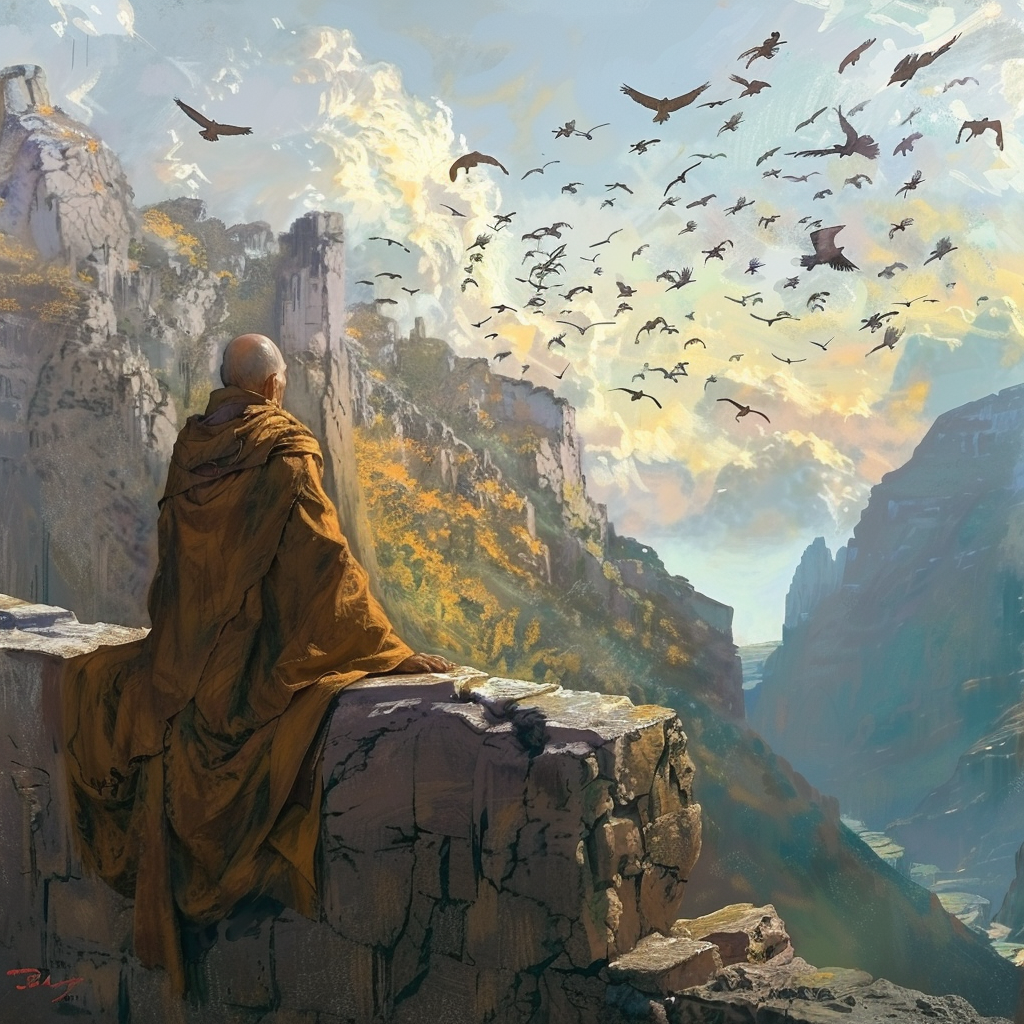Ornation
Goal of Ornation
Ornation is the art of observing local birdlife to divine possible future events. Not all birds could give omens, and several interpretations appeared based on local species. Generally, the relevance of birds was based on their closer relation to gods or humanity. For example, the honorable eagle, foreboding vulture, or humble chicken were substantial diviners. Each species came with its own set of rules for interpretation, often with broad implications of positive or negative futures.Requirements for Ornation
There are several ways to perform ornation, but every method requires a designated plot of land for the interpreter. The plot must be blessed with a birdsong, often performed by a cleric or bard. This birdsong is meant to replicate the songs of local avian life. Along with the song, the small plot must be blessed with holy water and salt. Observation must be performed from the same plot with each use of the spell to reduce the impact of the interpreter on the behavior of birds. From the plot, the interpreter will observe combinations of flight, feeding, and singing patterns.Origins of Augury
While augury has grown into a general term for determining futures (as well as the name of the empire out of Saint's Maar), its origin is in the talent of Ornation. Originally developed by humans, ornation was called augury and was the most popular basis of prophecy centuries before the empire of the same name.
The art has changed very little since its inception, though it has always contained general inconsistencies due to the variation of available species over great distances. Today, finding performers is a tall task, with most being found in traditionalist villages with underdeveloped facilities. The Augurs themselves rarely perform ornation due to their plethora of artifacts that assist in more reliable predictions.
Omens of Ornation
Divine Avian Omens
Divine avians include falcons, hawks, eagles, kestrels, kites, and ospreys. In the early days of augury, these signs were exclusive to the eagles of Shellbay but was later adapted to Fjordstrond and the Westlends. The signs of these divine avians are based on their position related to the interpreter.Low Flight: Low flight of predatory birds implies that divine blessings are coming in the near future.High Flight: High flight of divine avians is an omen that the gods are paying little attention to the locals, often meaning blessings are in the distant horizon. Debauchery often increases after this sign is made public.Behind the Interpreter: If the birds are behind the interpreter, it is a sign that the gods have lost sight of the locals, often implying obfuscation through sin or supernatural interference. It may also mean to reflect upon the past.Before the Interpreter: When the birds are before the interpreter, it is a sign that the locals need to think about their future or that further clarity is coming in the future.Duplicitous Avian Omens
Duplicitous avians include vultures, ravens, crows, and gulls. Denoted by their dirty behaviors or inclinations toward trickery, each of these species help deliver signs of negative events to come, such as blight, pestilence, and even murder.



Comments